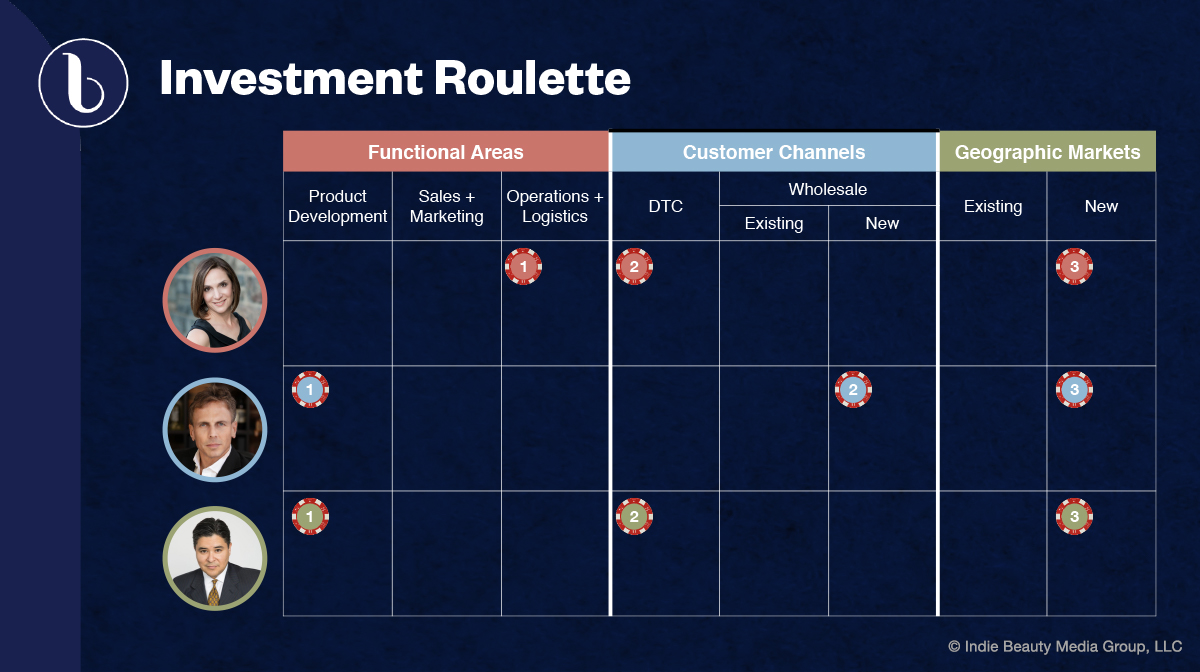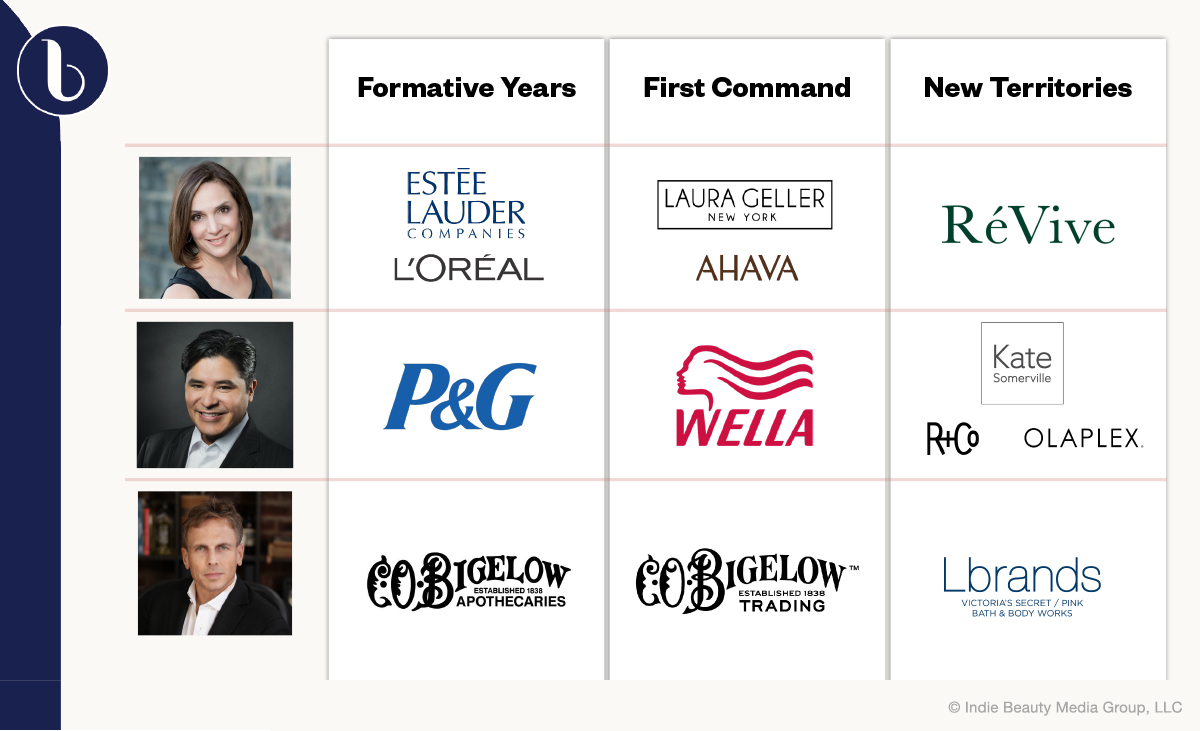
What’s Behind Successful CEO-Founder Relationships
Successful pairings of creative and business minds have been pivotal to some of the most significant brands of our time. Think Christopher Bailey and Angela Ahrendts at Burberry, Marc Jacobs and Robert Duffy at Marc Jacobs International, and Charlotte Tilbury and Demetra Pinsent at Charlotte Tilbury Beauty.
Elana Drell-Szyfer, CEO at ReVive Skincare, Ian Ginsberg, president of C. O. Bigelow, and Reuben Carranza, CEO at Kate Somerville Skincare, joined Beauty Independent’s In Conversation webinar last Wednesday to discuss effectively marrying entrepreneurial enthusiasm with operational expertise. From dealing with power struggles to recognizing distribution opportunities, here are key points they touched upon.

Cultivating A Healthy CEO-Founder Relationship
Founders are driven by passion and have a certain X factor, but often don’t have the operational know-how to manage a startup once it gets to a certain stage. Professionalizing aspects of a company is paramount to keeping up with booming growth. “As an entrepreneur, you go by gut and that’s great, but, if you want to scale and do something meaningful, then you bring in the army and look at things in a more serious way,” said Ginsberg.
The founder-CEO relationship can be fraught with power struggles, but it doesn’t have to be. Founders have to understand that a CEO isn’t coming in to do their jobs. Defining clear roles and carving out who owns what function is essential to ensuring positive relationships between members of the executive team.
Drell-Szyfer asserted the role of a professional CEO is vastly different from the role of a founder. CEOs should realize they aren’t brand creators and are at brands to help scale or take them to other markets. “This thing you’re running was created on some kind of magic to start with,” said Drell-Szyfer. “It’s your job as CEO to understand the flame and grow it.”
Earning trust on both sides is a top priority. CEOs should acknowledge what founders have done to ensure they don’t feel marginalized. Carranza underscored CEOs should take a humble approach and account for founders’ perspectives, factoring in their big ideas and indicating where assistance is required.
“One of the mistakes is you come in as the person with all the experience, and you want to come in and make a quick difference,” said Carranza. “The problem is you have to understand where this beautiful branded baby that someone has just created is coming from and what’s the story behind it. What are the passion elements that are critical that are no fly zones for you? If that isn’t done appropriately, upfront, you go off on a trajectory that can be very confrontational.”
New CEOs need latitude to do their work, take risks and even make mistakes. When Carranza was the CEO of Wella for North America, he brokered an alliance between the Procter & Gamble-owned hair color specialist and the haircare brand Oribe to better support salons. His idea wasn’t approved by the rest of the leadership team, but he insisted on pushing the deal through. Carranza recounted, “That was one of those command decisions where I said, ‘You’re either you’re giving me all of the accountability, the decision-making or not.'”

Marrying Corporate Skills With Indie Ingenuity
Implementing corporate-style accountability in an entrepreneurial enterprise is a distinct challenge. It’s a merger of structure and analytics, and seat-of-the-pants decisions that characterize the nimble environment of a startup.
CEOs with experience at large legacy companies can provide a blueprint for a heterogeneous environment fruitful for scaling a brand. Multifunctional career backgrounds are valuable prerequisites for candidates for the top job. Drell-Szyfer noted transitioning between corporate gigs and posts at bootstrapped businesses is becoming easier. She said, “You have to have a fundamental understanding of what you’re trying to do, but you can’t teach the passion, and I can see the passion happening in both places.”
When Drell-Szyfer stepped in to lead the brand Laura Geller Cosmetics in 2014, the brand was in the midst of packaging overhaul. The brand had pursued new packaging to fit a wholesale model. One of the first major decisions she made was to completely toss what the brand had created and review its strategy. Drell-Szyfer said, “As an effective CEO, you have to look for those one or two variables that have the biggest impact and are effectively implemented in whatever tactic or program is being pulled together.”
Investing In The Right People
Having the right network of people available to deploy quickly is fundamental to a prosperous business. The dilemma for many indie entrepreneurs is they can’t afford to bring in top talent. Carranza said rather hunt for people with particular bullet points on their resumes, founders should be digging deep into their rolodexes for candidates that would bring important skills to their companies. He suggested it’s imperative to invest in young up-and-comers and offer professional development. Carranza said, “The superstars of tomorrow are the new hires of today.”
Coaxing executives away from cushy corporate jobs seems difficult, but Drell-Szyfer said it’s not always. “There does come a point for many people where you don’t even have time to deposit the paycheck, [and] you feel empty,” she explained. “There’s really something to the idea of creating something special that you feel proud about.” In addition to the lure of creating something special, startups can have a leg up on corporate giants in terms of schedule flexibility, decision-making power and speed to market.
Identifying Future Growth Drivers
Founders should turn to CEOs that have a vision for untapped opportunities. Especially amid the pandemic, figuring out various growth channels is vital to survival. Ginsberg pointed out the struggling brick-and-mortar retail landscape makes it crucial to identify alternative avenues of distribution. If brands are looking to grow in different markets, they will need to employ sales, products and marketing tactics suitable to them, and seasoned executives may be indispensable in determining those tactics. Ginsberg said, “We have to make sure that we’re part of the conversation when these things pop up, and think about where else we could be that we weren’t before.”





Leave a Reply
You must be logged in to post a comment.